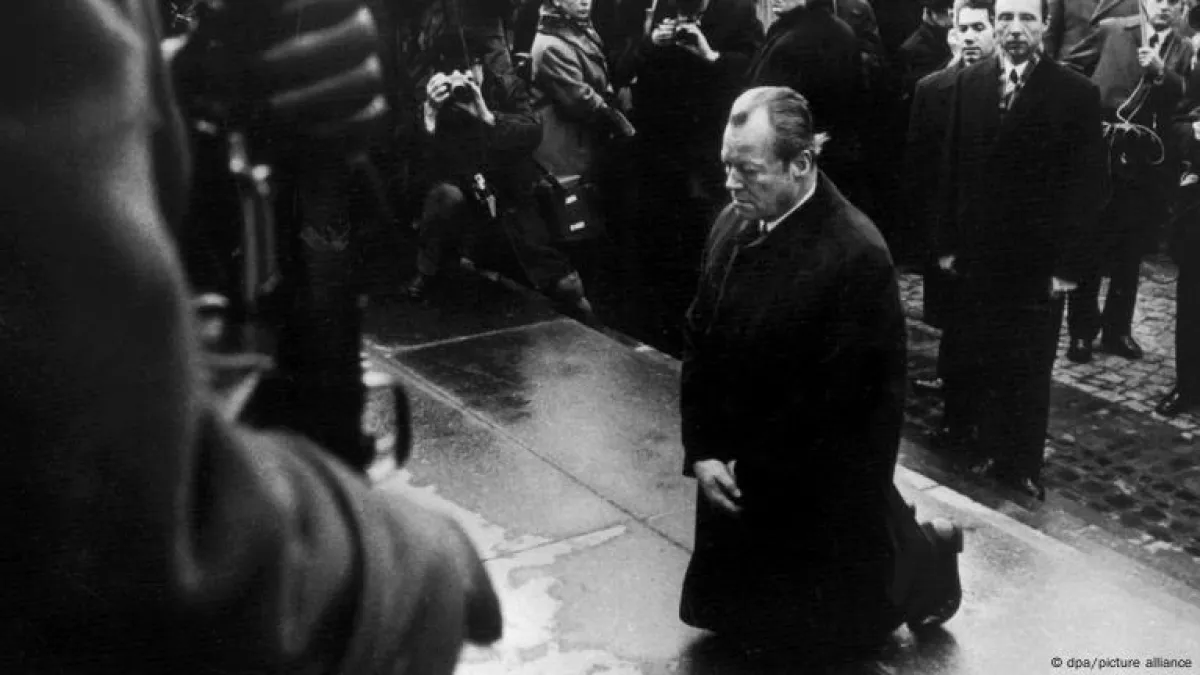Why the European Union needs a new Eastern policy Lost between Moscow, Beijing, and the South Caucasus
The EU won’t get far with the dominant approaches it currently applies to dilemmas in the East. Under present circumstances, only a philosophy of détente through pragmatic regional cooperation could be successful — both for the European Union itself and for the stability of the continent. But can the EU implement this in the form of a new Eastern policy?
This article concludes a mini-series of reflections arguing that the European Union’s main strategic dilemmas lie not in its transatlantic relations with the United States, but in the East. That is, in its relations with Russia, neighbouring countries in Eastern Europe and the South Caucasus, as well as China. It is in these areas that the EU and its individual member states face a host of unresolved issues — the answers to which will depend less on external factors and more on Europe’s own decisions and actions. And European countries, at least in theory, possess everything necessary to begin pursuing a policy in the East that would best serve their own long-term interests while also promoting regional stability.
In the first article, we explained why the European Union cannot rely solely on military deterrence in its relationship with Russia. In the second, we showed how the unresolved foundational flaws of the Eastern Partnership initiative deprived the EU of a coherent framework for an effective policy in its immediate eastern neighbourhood. However, both pieces were primarily focused on criticising the dominant approaches and priorities within the EU. Now, following the principle of “if you criticise — propose,” we will attempt to outline what shape the European Union’s policy towards the challenges and opportunities in the East could take under current international conditions.
Let us begin by putting forward two key theses. First, it is evident that the EU will not get far by sticking with its current approaches to its eastern dilemmas. It is in the Union’s own interest to develop, coordinate, and begin implementing a new philosophy for its Eastern policy as soon as possible. Second, under present conditions, only a philosophy of détente through pragmatic regional cooperation can be successful — both for the EU itself and for the broader stability of the continent.
Forgotten and distorted essence of Germany’s Eastern policy
In other words, the EU today needs a new reading of the legendary Ostpolitik pursued by West Germany during the Cold War. This reinterpretation must involve not only adapting the core ideas to current geopolitical and domestic conditions, but also returning to their original foundations. Over the past decades, these ideas have not only been forgotten but, in many ways, distorted and even maligned in public consciousness. What many people today understand by Ostpolitik — and what its advocates are often criticised for — frequently bears little resemblance to the actual Eastern policy of that era or to the rationale that gave rise to it.
As Hans Kundnani rightly emphasises, the Ostpolitik implemented by West German Social Democrats in the 1970s is fundamentally different from what later came to be understood as Germany’s policy towards Russia after reunification. The original version of Ostpolitik, inspired by Egon Bahr and his famous 1963 speech in Tutzing, was based on the principle of “change through rapprochement” (Wandel durch Annäherung). Bahr argued that positive changes in the policies of the USSR, East Germany, and other socialist countries — changes beneficial to West Germany and the entire Western world — were more likely to come not through total containment, pressure, or uncompromising confrontation with the Soviet bloc, but through open dialogue and détente.
After the end of the Cold War, however, German governments under Gerhard Schröder and Angela Merkel transformed the Bahr-Brandt approach into a new concept: “change through trade” (Wandel durch Handel).

What’s the difference? These are two fundamentally different philosophies. Even at the theoretical level, they stem from opposing schools of thought. The approach of Bahr and Brandt was rooted in the realist school of international relations, whereas what the governments of reunified Germany pursued after 1991 belongs squarely to liberal theory.
In the realist worldview of the original Ostpolitik architects, rapprochement with Soviet adversaries meant de-escalation and dialogue aimed at helping both sides better understand each other — and moving away from what psychologists call “negative attribution.” This refers to the tendency to ascribe only hostile intentions to the opponent, a mindset that in international politics inevitably leads to heightened tensions, arms races, and ultimately to conflict and war. The West German authorities had no goal of transforming the USSR or the Soviet bloc, no ambitions to democratise them or reshape their internal systems. Their aim was to reduce the level of military-political confrontation and to soften Soviet policy towards the West, West Germany, and, in particular, the question of Germany’s future.

In contrast, the logic of “change through trade” was grounded in liberal theory. Its premise was that intensified economic interaction could not only reduce the likelihood of war, but also steer Russia and other Eastern countries toward irreversible market reforms and Western-style democratisation. The problem is that such expectations and objectives stripped Wandel durch Handel of the realist core that had defined the original approach: reducing confrontation and enhancing cooperation through mutual acceptance and better understanding.
We will leave aside the interesting academic debates surrounding these two approaches and the theoretical schools underpinning them. It is enough to note that the liberal reinterpretation of Ostpolitik — or rather, its evolution over the past two decades — has led many in the West to frustration over the failure to reshape Eastern partners in accordance with Western norms. Today, that frustration has escalated into mainstream extremes, culminating in sweeping and entirely unjustified accusations that blame Ostpolitik for nearly all political misjudgements in the East.
There is simply no alternative
Like all extremes, this one carries many risks. The main danger is that there is no viable alternative to returning to the realist principles that underpinned Bahr and Brandt’s original Ostpolitik. Or rather, there is an alternative—but it leads only to perpetual crises, instability, and a decline in living standards and quality of life for everyone.
As we have previously written, a course of uncompromising confrontation with Russia, hardline opposition to China, and pressure on Eastern European and South Caucasus countries to change their domestic and foreign policies is simply senseless. Over the past two decades, this approach has repeatedly proven its ineffectiveness—including in the way it undermines the EU’s own security interests by effectively shooting itself in the foot.
The only long-term result of maintaining such a course—or anything similar—will be to turn the EU’s eastern neighbourhood into an even greater source of risk and instability. In such a scenario, the EU will only deepen its own vulnerabilities and highlight its lack of true strategic autonomy. As a result, internal contradictions within the Union are bound to intensify.

What’s most striking is that even the EU’s current push for militarisation and the development of a powerful, autonomous military-industrial complex—declared by Brussels as its chief long-term priority—cannot succeed under conditions of continued total confrontation on its eastern fronts. For these priorities to become truly attainable without undermining European prosperity and competitiveness, the EU must restore at least a minimal level of engagement with Russia, particularly in the energy sector.
What could a new Eastern policy for the EU look like today?
Returning to the question: what might a modern Ostpolitik for the EU look like?
While this discussion centres on EU policy, it goes without saying that international relations are a two-way street. Therefore, for the EU to initiate a meaningful strategic shift—and to successfully implement it—there must be at least some level of reciprocal effort from Russia, China, and the countries of the Eastern Partnership.
It is also clear that simply transitioning to open dialogue and meaningful cooperation is unrealistic in the midst of the Russia–Ukraine war and other complex circumstances. But no one—except populists—is promising quick or easy wins. Incidentally, when we speak today of dialogue and cooperation during the Cold War, we tend to focus on the end results and idealise the process. Yet we must remember that it, too, began under extremely difficult and seemingly unfavourable conditions. That is precisely why the lessons of that era hold such value today.
The first—and arguably most difficult—step towards a new Eastern policy for the EU is to accept reality as it is, even if it is deeply unpalatable. To recognise the current state of affairs without wearing rose-tinted glasses or fearing that such realism will be seen as a lack of principle. This was exactly the first step taken by Egon Bahr and Willy Brandt.
Accepting reality does not mean agreeing that a better reality is impossible. On the contrary: the only way to genuinely—not just rhetorically—change reality for the better is to soberly and responsibly acknowledge what exists today. In this sense, the EU would benefit greatly by quickly coming to terms with the fact that the world as a whole, and Europe in particular, have long since left the prolonged 1990s behind.
Building on this accepted reality, clear goals must be formed—the changes that one strives to achieve. To secure meaningful results, these goals must also be realistic. Let us emphasise right away: realistic does not mean unambitious. In the 1970s, a natural goal for West Germany was the reunification of Germany. Today, a similarly natural and vital objective for the entire EU would be to preserve peace on the continent without driving itself into even greater strategic dependence on other states and circumstances that Europeans cannot fully control.
Finally, one more important historical lesson for a possible new Eastern policy of the EU is that significant positive change usually requires a very long and painstaking effort—thankless and often even unpleasant for politicians and diplomats. Achieving such grand goals in international relations is difficult to do through sudden moves or polished statements for the cameras. A new Ostpolitik can become a successful reality only step by step, through exhausting work behind closed doors.
This may not sound very encouraging, but there is simply no other recipe for success available to the EU.
To avoid ending on such an ambiguous note, it is worth adding that the historical parallel with Willy Brandt’s government policy is interesting for the EU for another reason. As Egon Bahr himself noted, the turn toward Ostpolitik would have been impossible without American support. Washington saw its interest in West Germany’s Eastern policy at the height of the Cold War. There is good reason to believe that today, it could see an even greater interest in a new Eastern policy for the EU, based on the philosophy of détente through pragmatic regional cooperation.








